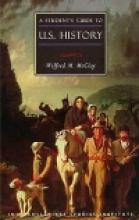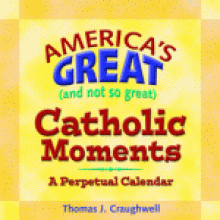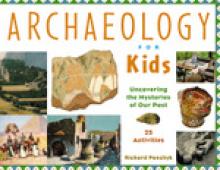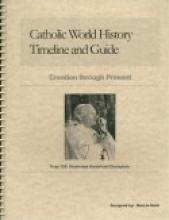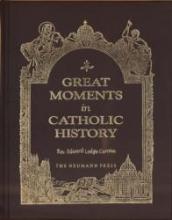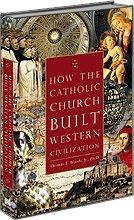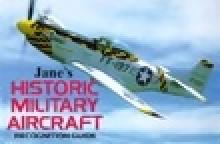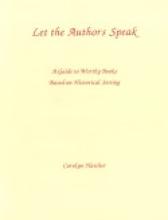History General Resource - Miscellaneous
A Students' Guide to U.S. History
Subject(s):
Setting:
Grade / Age level:
Resource Type:
Review:
In A Students' Guide to U.S. History, author Wilfred M. McClay challenges the mind of the reader to think wider, deeper and higher about the study of American history. After explaining the purpose behind this book, he elaborates on what the study of history mistakenly is thought to be, before he realigns the reader's mind to what it should be. Taking a philosophical turn of mind, he dares the reader to search for truth; to do otherwise would be folly.
Rather than consider the study of American history as a boring parade of facts, he implores the reader to consider it "as a drama of incomparable sweep and importance." At the same time, he reminds us that "American history needs to be seen in the context of a larger drama."
Another reason he gives for studying history is because it tells us about ourselves.
Calling it a gallery of windows, there are a number of topics related to the study of history he suggests studying: America and Europe, Capitalism, Founding, Frontier, and many others. He gives an overview of each topic, discusses the proper lens through which the reader should view each topic, and offers additional reading selections. He closes with a list of dos and don'ts for studying and researching history and offers a final list of suggested reading.
Overall, the style of writing although intellectual and challenging at times, is not incomprehensible, stretching our vocabularies with an occasional, unfamiliar word or phrase, such as "opine portentously," "incommensurable," or "cynosure."
Even though the book is intended for college age students, a high school student or anyone for that matter interested in the study of history would benefit from this book. My only caution would be that a parent read any of the suggested fiction titles before handing them to a high school student. Some are not a problem, but others warrant discussion, or may contain parts which would be considered objectionable.
This guide is also available to download for free at the Intercollegiate Studies Institute home page.
Rather than consider the study of American history as a boring parade of facts, he implores the reader to consider it "as a drama of incomparable sweep and importance." At the same time, he reminds us that "American history needs to be seen in the context of a larger drama."
Another reason he gives for studying history is because it tells us about ourselves.
Calling it a gallery of windows, there are a number of topics related to the study of history he suggests studying: America and Europe, Capitalism, Founding, Frontier, and many others. He gives an overview of each topic, discusses the proper lens through which the reader should view each topic, and offers additional reading selections. He closes with a list of dos and don'ts for studying and researching history and offers a final list of suggested reading.
Overall, the style of writing although intellectual and challenging at times, is not incomprehensible, stretching our vocabularies with an occasional, unfamiliar word or phrase, such as "opine portentously," "incommensurable," or "cynosure."
Even though the book is intended for college age students, a high school student or anyone for that matter interested in the study of history would benefit from this book. My only caution would be that a parent read any of the suggested fiction titles before handing them to a high school student. Some are not a problem, but others warrant discussion, or may contain parts which would be considered objectionable.
This guide is also available to download for free at the Intercollegiate Studies Institute home page.
Reviewed by:
First reviewed:
12-29-04
America's Great (and not so great) Catholic Moments: A Perpetual Calendar
Subject(s):
Setting:
Grade / Age level:
Resource Type:
Review:
This interesting, informative and often light-hearted perpetual calendar offers an event from Catholic history that took place on each date of the year. A brief paragraph explains the event (highlighting many great Catholics people and events from American History) with a "For More Information" bar offering the source of the information (and further reading). Without whitewashing all Catholics as noble (did you know that Dred Scott and the Supreme Court justice giving the majority opinion were both Catholics?), this calendar gives a glimpse of Americans in every walk of life - Hollywood, Sports, Politics - and introduces us to exemplary figures like the nuns who nursed soldiers from the North and South during the Civil War.
This would make a fun family project to share at meal-time and might lead to further "explorations" about particularly interesting entries. It would also make a great gift for a college student, history buff or homeschool parent.
This would make a fun family project to share at meal-time and might lead to further "explorations" about particularly interesting entries. It would also make a great gift for a college student, history buff or homeschool parent.
Perspective:
Catholic
Additional notes:
Binding details: desk-calendar sized stand)
Reviewed by:
First reviewed:
10-17-05
Archaeology for Kids
Uncovering the Mysteries of Our Past
Subject(s):
Setting:
Grade / Age level:
Resource Type:
Review:
Reviewed by:
First reviewed:
8-27-05
Catholic World History Timeline and Guide
Subject(s):
Setting:
Grade / Age level:
Resource Type:
Review:
This book/kit contains colorful strips of paper printed with the years that can be affixed to a wall-mounted (or board-mounted) timeline. The book provides a chart for how to arrange all the strips of paper so that there is enough room for the hundreds of black and white images of people and events which will comprise the bulk of the timeline. These images are taken from older books and can be "colorized" for a nicer appearance (and a fun project). The images are printed on very heavy cardstock which makes up about half of the very thick spiral bound book. The first half of the book (which, as might be expected, is printed on ordinary white paper rather than cardstock) offers chronological listings (with references to the illustrations, the Catechism of the Catholic Church and the Bible) of the people and events for use during construction of the timeline and for reference during history studies. The material covers a lot of detail about Biblical events and people, significant events and people from Ancient Greece and Ancient Rome, extensive details about the life of Christ and the early church, saints, church councils, heresies, prominent popes, Roman emperors, cultural highlights, battles, major kings and dynasties, crusades, great authors, great works of art and architecture, important explorers, and more. There are separate sections in the book timeline for U.S. Presidents and the Popes to make the book easier to use, but they are designed to be blended into the same timeline for your family.
The front of the book includes some rather extensive lists of recommended Catholic history texts, supplemental history reading and recommended websites.
The package is rather expensive, but many families are finding that, because it is a resource for the whole family that the investment was a worthwhile one. Personally, I very seldom purchase items in this price range (approximately $100). I have to admit that, in addition to using the images for our family's timeline (although we didn't do it exactly the way recommended in the book) I find myself using the reference timeline portion of the book very frequently. It's definitely not a book that will just get left on the shelf!
The front of the book includes some rather extensive lists of recommended Catholic history texts, supplemental history reading and recommended websites.
The package is rather expensive, but many families are finding that, because it is a resource for the whole family that the investment was a worthwhile one. Personally, I very seldom purchase items in this price range (approximately $100). I have to admit that, in addition to using the images for our family's timeline (although we didn't do it exactly the way recommended in the book) I find myself using the reference timeline portion of the book very frequently. It's definitely not a book that will just get left on the shelf!
Perspective:
Catholic
Reviewed by:
First reviewed:
4-21-01
Great Moments in Catholic History
Subject(s):
Setting:
Grade / Age level:
Resource Type:
Review:
Inviting the reader in with its black and white illustrations on each page, Great Moments in Catholic History presents one hundred exceptional events in the history of the Catholic Church. Originally published in 1938, each page presents a great moment beginning with the Annunciation and ending with Pope Pius XI's 1937 Encyclical letter on Atheistic Communism. At the end of the book there are 500 quiz questions, 5 for each of the 100 historical events, to review the lessons learned.
This book would be helpful in enriching the study of history with a Catholic perspective. One cannot begin to appreciate history without first understanding the impact of Christ and His church on historical events; The easy-to-read format of this book makes that understanding almost effortless.
The author recommends using this book as a supplement for seventh and eighth graders. However my younger students have benefited from using Great Moments in Catholic History as a read-aloud book. Not only have the children enjoyed learning from our read aloud time, but so have I.
Like many of Neumann Press' books, Great Moments in Catholic History is beautifully bound. The black hardcover is embossed with gold and it is filled with ivory 60-pound paper.
This book would be helpful in enriching the study of history with a Catholic perspective. One cannot begin to appreciate history without first understanding the impact of Christ and His church on historical events; The easy-to-read format of this book makes that understanding almost effortless.
The author recommends using this book as a supplement for seventh and eighth graders. However my younger students have benefited from using Great Moments in Catholic History as a read-aloud book. Not only have the children enjoyed learning from our read aloud time, but so have I.
Like many of Neumann Press' books, Great Moments in Catholic History is beautifully bound. The black hardcover is embossed with gold and it is filled with ivory 60-pound paper.
Another reviewer comments that she had a few concerns about this book although she found it helpful overall. Please click here for her comments.
Reviewed by:
First reviewed:
1998-99
Hold That Thought: History Volumes 1 and 2
Subject(s):
Setting:
Grade / Age level:
Resource Type:
Review:
I have a houseful of active, writing-resistant sons, and I am always on the lookout for materials that not only encourage my boys to write frequently, but also encourage them to write well. History, Volumes 1 and 2, from Hold That Thought have turned writing in our history studies, and the historical overlaps into science, religion, and the fine arts, into an activity that we all enjoy. The pages produced by the children are original reports that have filled our notebooks and our heads with unforgettable details, while documenting our studies and providing a pleasant means of review. The children themselves are proud that their efforts look so professional and polished. I am thrilled that it is so easy!
Each CD-ROM contains hundreds of files in pdf format that can be easily printed at home on either a PC or a MAC, demanding no flash trips to the copy shop or weeks of pre-planning. Volume 1 covers the highlights of world history from ancient times through the period of European exploration in over 350 worksheets. Volume 2 begins with European exploration, continues with United States history, and concludes with modern world history in over 600 worksheets. Don't be misled by the term "worksheet". These are not fill-in-the-blank worksheets, but more like "picture pages" that include a picture that can be colored as well as lines for the student's writing. Pages feature important biographical characters, events, geographical regions, and even architectural achievements; the range of Who? What? Where? and When? are available. Detailed content lists are available at the publisher's website.
In addition to these picture pages, the CD-ROMs contain many special features. I especially like the "first draft" sheets that are available to help more inexperienced writers with identifying important information that should appear in their reports. One of my boys loves the newspaper-reporter style of some of the historical event worksheets. Suggestions for extension activities and coloring pages are included for some events, and outline maps are another convenience.
Because the contents are extensively indexed and cross-referenced alphabetically and by date, these CD-ROMs can be used equally well by families who prefer textbooks to those who prefer a "living books" approach to those who utilize unit studies. Our family uses the IEW writing method (reviewed elsewhere) with a classical approach to history, and we have found a seamless mesh using these worksheets. Unlike materials that contain preprinted text, there are no interpretations of historical details that require editing or quibbles to reflect our beautiful Catholic faith. The producers of these materials are Christian, and significant religious figures have been included. However, don't expect to find all of the Popes or lesser-known Catholics; more generic pages can be used for these people.
These CD-ROMs make notebooking a pleasure and provide a concrete way to summarize a child's study, using his or her own words and work. The pages can be used to make special topical notebooks, added to a Charlotte Mason-inspired Book of Time, used to enhance daily work or formal assignments, or even included in an annual portfolio. I can also imagine using the sheets in 4-H reporting projects, Scouting reports and merit badge work, co-op classes, or even using the pictures to make posters. The liberal copyright allows the contents to be used by the purchaser's own immediate family or for any class that the purchaser teaches, so long as no money is charged for them. Finally, I must note that the customer service that I received was exceptional. My order was received very, very quickly, and a minor problem was straightened out immediately and far more generously than I have experienced before. All things considered, Hold That Thought's History Volumes 1 and 2 are our family's "top pick" of new materials for this school year.
Each CD-ROM contains hundreds of files in pdf format that can be easily printed at home on either a PC or a MAC, demanding no flash trips to the copy shop or weeks of pre-planning. Volume 1 covers the highlights of world history from ancient times through the period of European exploration in over 350 worksheets. Volume 2 begins with European exploration, continues with United States history, and concludes with modern world history in over 600 worksheets. Don't be misled by the term "worksheet". These are not fill-in-the-blank worksheets, but more like "picture pages" that include a picture that can be colored as well as lines for the student's writing. Pages feature important biographical characters, events, geographical regions, and even architectural achievements; the range of Who? What? Where? and When? are available. Detailed content lists are available at the publisher's website.
In addition to these picture pages, the CD-ROMs contain many special features. I especially like the "first draft" sheets that are available to help more inexperienced writers with identifying important information that should appear in their reports. One of my boys loves the newspaper-reporter style of some of the historical event worksheets. Suggestions for extension activities and coloring pages are included for some events, and outline maps are another convenience.
Because the contents are extensively indexed and cross-referenced alphabetically and by date, these CD-ROMs can be used equally well by families who prefer textbooks to those who prefer a "living books" approach to those who utilize unit studies. Our family uses the IEW writing method (reviewed elsewhere) with a classical approach to history, and we have found a seamless mesh using these worksheets. Unlike materials that contain preprinted text, there are no interpretations of historical details that require editing or quibbles to reflect our beautiful Catholic faith. The producers of these materials are Christian, and significant religious figures have been included. However, don't expect to find all of the Popes or lesser-known Catholics; more generic pages can be used for these people.
These CD-ROMs make notebooking a pleasure and provide a concrete way to summarize a child's study, using his or her own words and work. The pages can be used to make special topical notebooks, added to a Charlotte Mason-inspired Book of Time, used to enhance daily work or formal assignments, or even included in an annual portfolio. I can also imagine using the sheets in 4-H reporting projects, Scouting reports and merit badge work, co-op classes, or even using the pictures to make posters. The liberal copyright allows the contents to be used by the purchaser's own immediate family or for any class that the purchaser teaches, so long as no money is charged for them. Finally, I must note that the customer service that I received was exceptional. My order was received very, very quickly, and a minor problem was straightened out immediately and far more generously than I have experienced before. All things considered, Hold That Thought's History Volumes 1 and 2 are our family's "top pick" of new materials for this school year.
Reviewed by:
First reviewed:
9-8-04
How the Catholic Church Built Western Civilization
Subject(s):
Setting:
Grade / Age level:
Resource Type:
Review:
Perspective:
Catholic
Reviewed by:
First reviewed:
11-28-2005
Jane's Historic Military Aircraft: Recognition Guide
Subject(s):
Setting:
Grade / Age level:
Resource Type:
Review:
There are a wealth of good and interesting books about the two World Wars: The Winged Watchman by Hilda Van Stockum, Enemy Brothers by Constance Savery, Flying Aces of World War I by Gene Gurney and many others. After reading a number of these, I began to wish for a book with pictures of the various types of airplanes in order to understand and appreciate the stories better.
I searched for such a guide unsuccessfully for a year or more before I happened to visit the Smithsonian National Air and Space Museum in Washington D.C. where I came upon this little gem in the gift shop.
This 5" x 7 1/2" guidebook has a friendly size and tough binding for little hands. (We've had ours for over two years and it has held up very nicely.) It organizes the aircraft into five categories: World War I, Inter-War, World War II, Postwar and Helicopters. The categories are easy to find with color bars alongside each left-hand page. The book was written in the U.K. and thus does not focus on various smaller wars since World War II, but the "Postwar" and "Helicopter" segments do include some information about the Korean and Vietnam Wars. Also keep in mind that this is a guidebook for "Historic" Aircraft and thus does not include aircraft that is in use by military today.
Each two page spread includes a fact page on the lefthand side and a full-color photo of a restored or replica airplane that is in flying condition. The fact page includes a paragraph explaining the aircraft's history and features along with detailed specifications: name, type, accomodation, dimensions, weight, speed, range, first flight date, etc.
The book is a little expensive (around $25) and not an absolutely essential ingredient in the study of history, but we've found it to be a really nice supplement. It might make a great Christmas or Birthday present for your young World War II buff.
I searched for such a guide unsuccessfully for a year or more before I happened to visit the Smithsonian National Air and Space Museum in Washington D.C. where I came upon this little gem in the gift shop.
This 5" x 7 1/2" guidebook has a friendly size and tough binding for little hands. (We've had ours for over two years and it has held up very nicely.) It organizes the aircraft into five categories: World War I, Inter-War, World War II, Postwar and Helicopters. The categories are easy to find with color bars alongside each left-hand page. The book was written in the U.K. and thus does not focus on various smaller wars since World War II, but the "Postwar" and "Helicopter" segments do include some information about the Korean and Vietnam Wars. Also keep in mind that this is a guidebook for "Historic" Aircraft and thus does not include aircraft that is in use by military today.
Each two page spread includes a fact page on the lefthand side and a full-color photo of a restored or replica airplane that is in flying condition. The fact page includes a paragraph explaining the aircraft's history and features along with detailed specifications: name, type, accomodation, dimensions, weight, speed, range, first flight date, etc.
The book is a little expensive (around $25) and not an absolutely essential ingredient in the study of history, but we've found it to be a really nice supplement. It might make a great Christmas or Birthday present for your young World War II buff.
Reviewed by:
First reviewed:
10-13-03
Let the Authors Speak
A Guide to Worthy Books Based on Historical Setting
Subject(s):
Setting:
Grade / Age level:
Resource Type:
Review:
This book offers approximately 1300 "living books" (books that make history come alive such as biographies, historical accounts, historical fiction and related literature) organized into several lists - chronologically, by author and by title. These books were chosen from a number of guides to worthwhile books, including Honey for a Child's Heart by Gladys Hunt and the Masterplots series. They include many fine Catholic books and lives of the Saints. I must admit to being a little disappointed that the author hasn't read all the books herself. This would cause me to use extra care and I did find one book that I would hesitate recommending for teens - Red Storm Rising by Tom Clancy.
The introductory chapters (18 pages) provide an excellent, down-to-earth, discussion of the importance of reading good books, and other worthwhile aspects of the educational philosophies of Charlotte Mason. This introduction is probably worth the price of the book even without all the subsequent book lists! This book provides a helpful resource in adding good books to a history course and excellent background reading on educational philosophy for parents.
The introductory chapters (18 pages) provide an excellent, down-to-earth, discussion of the importance of reading good books, and other worthwhile aspects of the educational philosophies of Charlotte Mason. This introduction is probably worth the price of the book even without all the subsequent book lists! This book provides a helpful resource in adding good books to a history course and excellent background reading on educational philosophy for parents.
Perspective:
Catholic
Reviewed by:
First reviewed:
1-19-01

